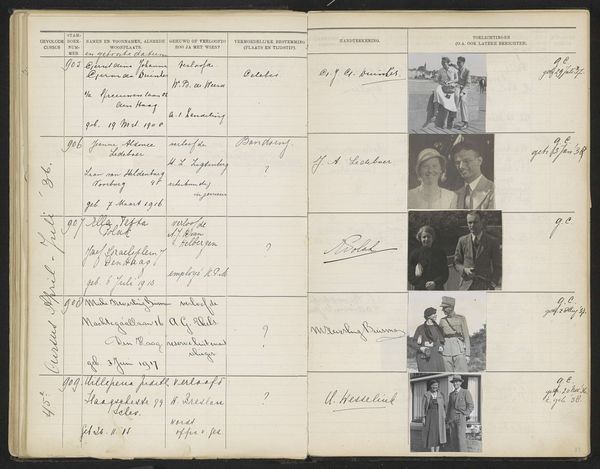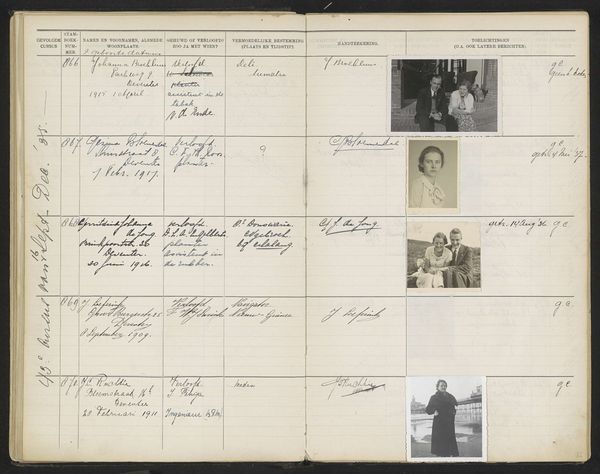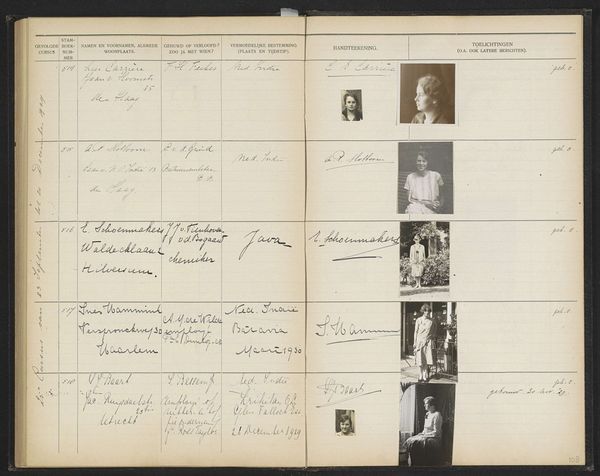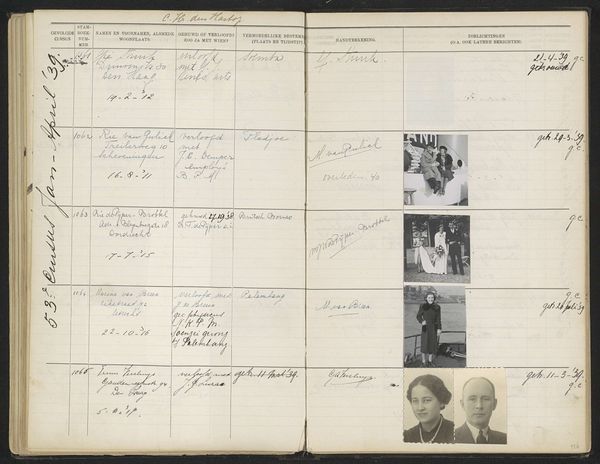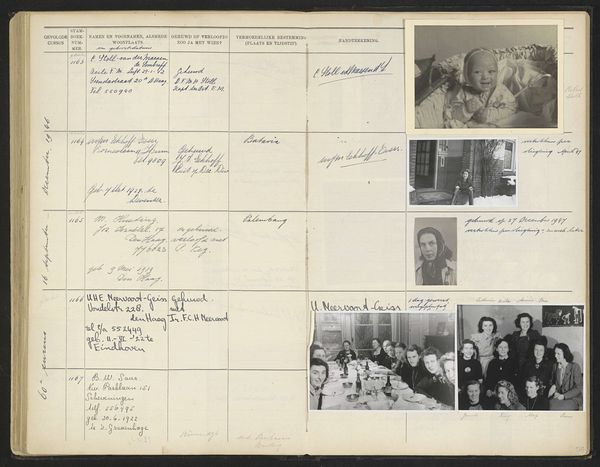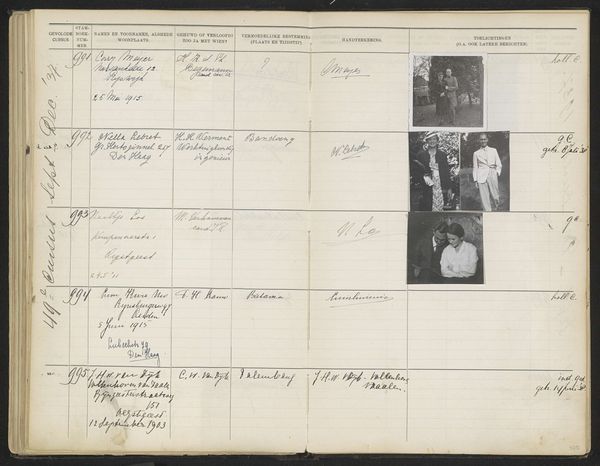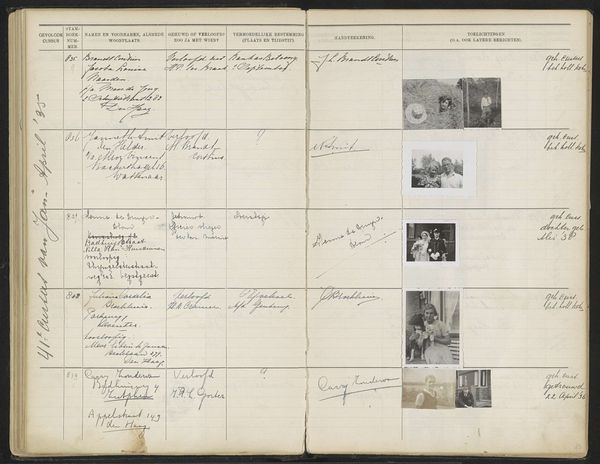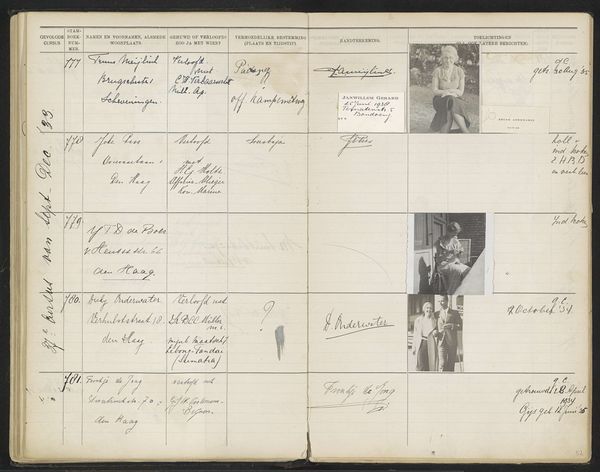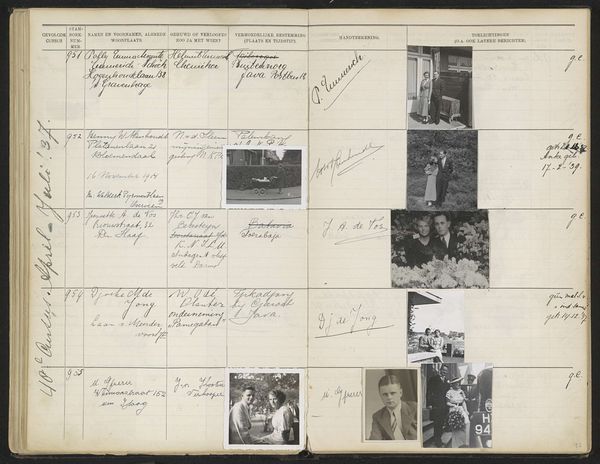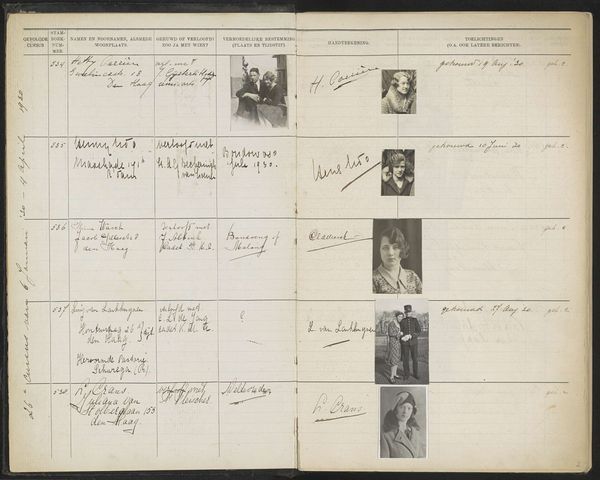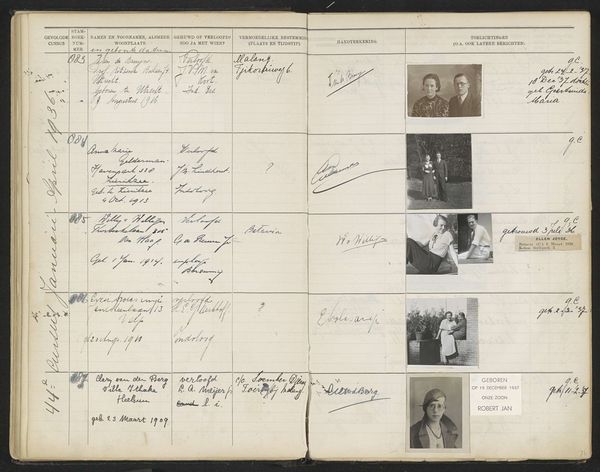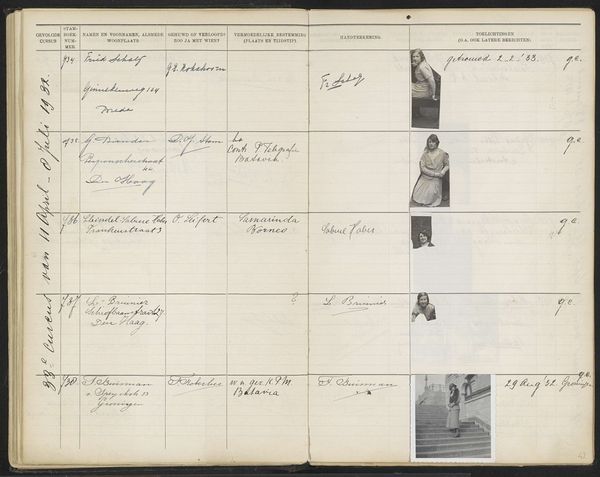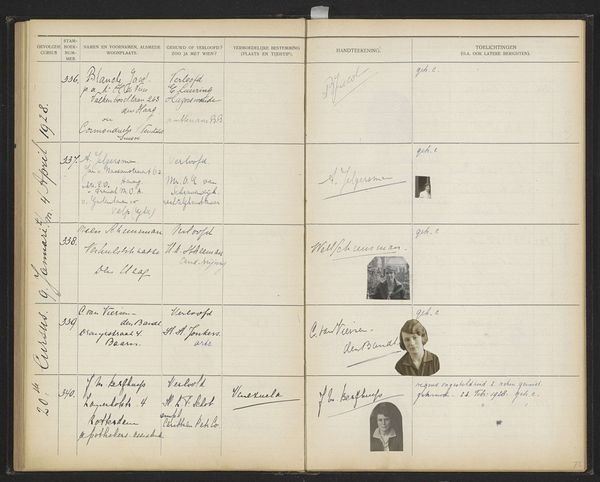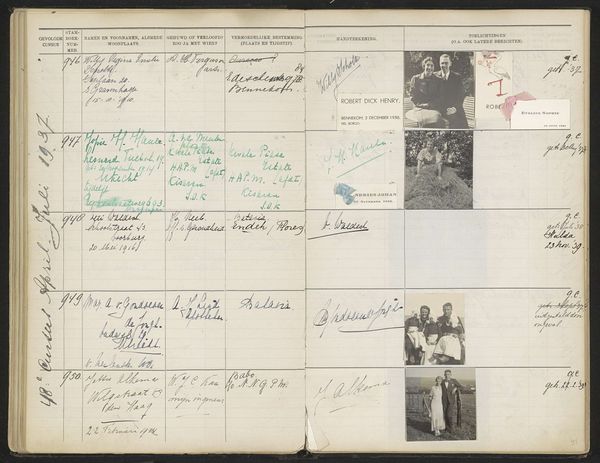
Blad 99 uit Stamboek van de leerlingen der Koloniale School voor Meisjes en Vrouwen te 's-Gravenhage deel I (1921-1929) Possibly 1929
0:00
0:00
mixed-media, collage, print, paper, photography
#
portrait
#
mixed-media
#
collage
# print
#
paper
#
photography
#
history-painting
Dimensions: height 340 mm, width 440 mm
Copyright: Rijks Museum: Open Domain
Editor: This is “Blad 99 uit Stamboek van de leerlingen der Koloniale School voor Meisjes en Vrouwen te 's-Gravenhage deel I (1921-1929),” possibly from 1929. It’s a mixed-media piece combining collage, prints, paper, and photography. It feels like an official record, but with these intimate photographic portraits inserted. What strikes you most about this work? Curator: What I find most compelling is the way this seemingly bureaucratic document hints at the complex realities of Dutch colonialism. These are pages from a registry of students at a colonial school for girls and women, likely intended to train them for service within the colonial system. The neat rows and columns attempt to impose order, but the individual portraits resist complete assimilation. Editor: Resist, how? Curator: Consider the gaze of the women in these photos. Are they passively accepting their role, or is there a hint of defiance, of a complex inner life that resists the objectification inherent in colonial documentation? Also, look closely at the photograph of the group. What narratives might they carry? Are their garments of mixed cultural references? Editor: I see it now. The contrast between the rigid structure of the ledger and the individuality captured in the photos really brings the human element to the forefront. It makes you wonder about their lives beyond this document. What were their aspirations and did they get fulfilled or were squashed? Curator: Exactly. And that tension—between the colonial project's desire for control and the inherent resistance of individual identity—is what makes this work so powerful, prompting us to confront uncomfortable questions about the legacies of colonialism and its impact on individual lives. Editor: I see so many layers here. It’s a stark reminder of the power dynamics at play and the importance of remembering individual stories within broader historical narratives. Curator: Indeed. By looking closely at what is included, what is omitted, and how these women chose to represent themselves, we can start to understand this time period with all its human nuances.
Comments
No comments
Be the first to comment and join the conversation on the ultimate creative platform.
